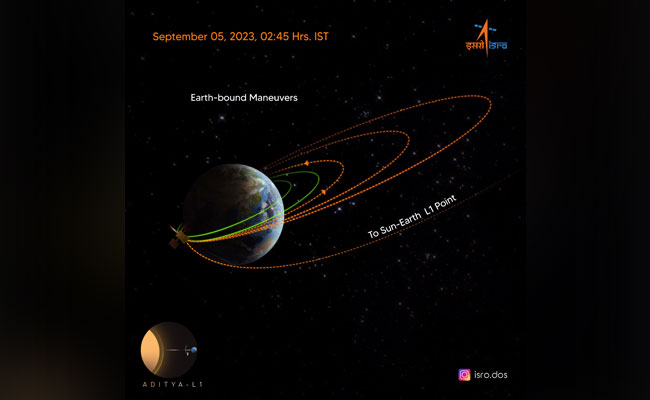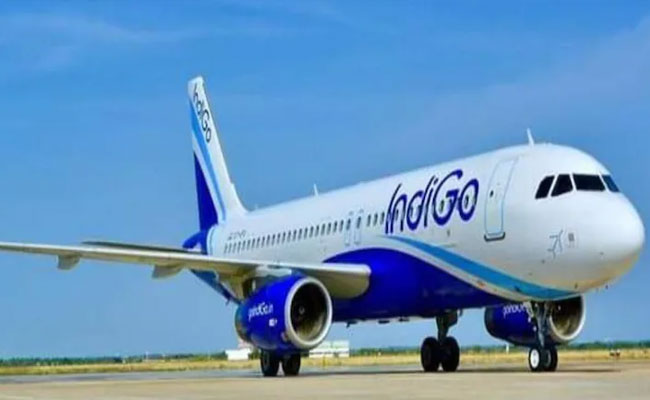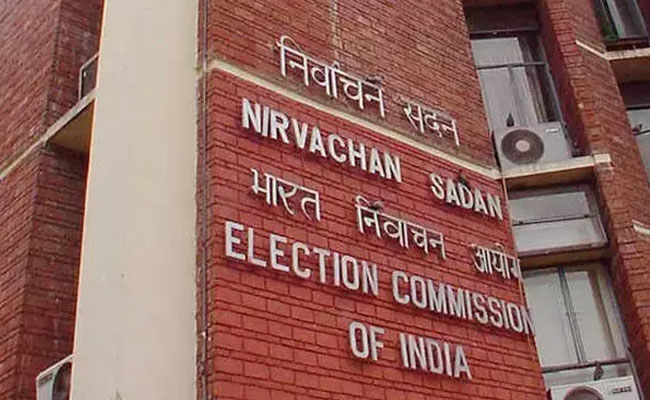Bengaluru (PTI): Aditya L1, the first space based Indian mission to study the Sun underwent the second earth-bound manoeuvre successfully, during the early hours on Tuesday, ISRO said.
ISRO's Telemetry, Tracking and Command Network (ISTRAC) carried out the operation.
"The second Earth-bound manoeuvre (EBN#2) is performed successfully from ISTRAC, Bengaluru. ISTRAC/ISRO's ground stations at Mauritius, Bengaluru and Port Blair tracked the satellite during this operation. The new orbit attained is 282 km x 40225 km," ISRO said in a post on X (formerly Twitter).
The next manoeuvre (EBN#3) is scheduled for September 10, 2023, around 02:30 Hrs. IST, it said.
Aditya-L1 is the first Indian space based observatory to study the Sun from a halo orbit around first sun-earth Lagrangian point (L1), which is located roughly 1.5 million km from earth.
The first earth-bound manoeuvre was successfully performed on September 3.
The spacecraft will undergo two more earth-bound orbital manoeuvres before placing in the transfer orbit towards the Lagrange point L1. Aditya-L1 is expected to arrive at the intended orbit at the L1 point after about 127 days.
ISRO's Polar Satellite Launch Vehicle (PSLV-C57) on September 2 had successfully launched the Aditya-L1 spacecraft, from the Second Launch Pad of Satish Dhawan Space Centre (SDSC), Sriharikota.
After a flight duration of 63 minutes and 20 seconds, Aditya-L1 spacecraft was successfully injected into an elliptical orbit of 235x19500 km around the earth.
According to ISRO, a satellite placed in the halo orbit around the L1 point has the major advantage of continuously viewing the Sun without any occultation /eclipses. This will provide a greater advantage of observing the solar activities and its effect on space weather in real time.
Aditya-L1 carries seven scientific payloads indigenously developed by ISRO and national research laboratories including Indian Institute of Astrophysics (IIA), Bengaluru, and Inter University Centre for Astronomy and Astrophysics (IUCAA), Pune.
The payloads are to observe the photosphere, chromosphere and the outermost layers of the Sun (the corona) using electromagnetic and particle and magnetic field detectors.
Using the special vantage point L1, four payloads directly view the Sun and the remaining three payloads carry out in-situ studies of particles and fields at the Lagrange point L1, thus providing important scientific studies of the propagatory effect of solar dynamics in the interplanetary medium.
The suits of Aditya L1 payloads are expected to provide the most crucial information to understand the problem of coronal heating, coronal mass ejection, pre-flare and flare activities and their characteristics, dynamics of space weather, propagation of particles and fields.
According to scientists, there are five Lagrangian points (or parking areas) between the Earth and the Sun where a small object tends to stay if put there. The Lagrange Points are named after Italian-French mathematician Joseph-Louis Lagrange for his prize-winning paper -- "Essai sur le Problème des Trois Corps, 1772." These points in space can be used by spacecraft to remain there with reduced fuel consumption.
At a Lagrange point, the gravitational pull of the two large bodies (the Sun and the Earth) equals the necessary centripetal force required for a small object to move with them.
Let the Truth be known. If you read VB and like VB, please be a VB Supporter and Help us deliver the Truth to one and all.
Mumbai (PTI): Aviation watchdog DGCA on Friday eased the flight duty norms by allowing substitution of leaves with a weekly rest period amid massive operational disruptions at IndiGo, according to sources.
As per the revised Flight Duty Time Limitations (FDTL) norms, "no leave shall be substituted for weekly rest", which means that weekly rest period and leaves are to be treated separately. The clause was part of efforts to address fatigue issues among the pilots.
Citing IndiGo flight disruptions, sources told PTI that the Directorate General of Civil Aviation (DGCA) has decided to withdraw the provision 'no leave shall be substituted for weekly rest' from the FDTL norms.
ALSO READ: 49 Indigo flights likely to be cancelled from Hyderabad
"In view of the ongoing operational disruptions and representations received from various airlines regarding the need to ensure continuity and stability of operations, it has been considered necessary to review the said provision," DGCA said in a communication dated December 5.
The gaps in planning ahead of the implementation of the revised FDTL, the second phase of which came into force from November 1, have resulted in crew shortage at IndiGo and is one of the key reasons for the current disruptions.
#BREAKING: #DGCA relaxes a clause which debarred airlines to club leaves with weekly rest to mitigate #IndiGo crisis
— Economic Times (@EconomicTimes) December 5, 2025
🔴 Catch the day's latest news here ➠ https://t.co/8eVBGnsJUA 🗞️ pic.twitter.com/KUWc8R2Kso





